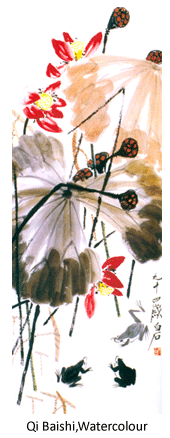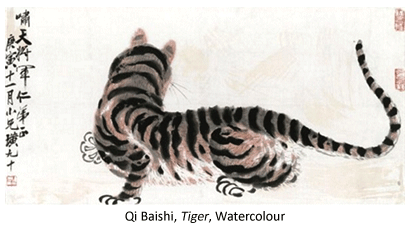- Prelude
- Editorial
- Manjit Bawa
- Husain's Calcutta
- Vivan's Visionary Reconstruction of History at Victoria Memorial, 1998
- The Remaking of Indian Painting
- Picasso Re-visited
- Benodebehari Mukherjee: A Recluse and the Centenary Show
- In Past and Present Continuum Speaking to Thota Vaikuntam
- The Importance of Being Husain
- Image-making to Image-circulation: Implicated Image(ry)
- 153 Years Old yet Young at Heart: Mumbai's Sir JJ School of Art
- Two Decades: A Critical Insight by an Art Critic and an Artist
- Biedermeier Style: Biedermeier Furniture
- Vacheron Constantin
- The Irony of Andy Warhol
- Then and Now: An Indian Perspective to the Art Market 1990-2010
- Pablo, Andy, Here I Come
- What Happened and What's Forthcoming
- Bid's Got Hammered?
- Anish Kapoor at National Gallery of Modern Art in Delhi and Mehboob Studio in Mumbai
- Tribute to Hemanta Misra: the “Calcutta Group” Painter
- Art Events Kolkata
- Mumbai Art Sighting
- Art Bengaluru
- Exploring the Riverine Culture of Bengal
- Alternative art practices define Bangalore
- India Art Summit Turns Three
- An Aesthetic Fair
- SSVAD: A New Arts Centre in Santineketan
- Visible Invisible by Siraj Saxena
- A Fleeting World : Paintings by Sunil De
- Previews
- In the News
ART news & views
Pablo, Andy, Here I Come
Volume: 3 Issue No: 12 Month: 1 Year: 2011
Across the Border
by Shoma Bhattacharjee
Chinese classical painter Qi Baishi clocked in at No. 3 in the global auction scene in 2009, just behind the untouchables, Picasso and Warhol. His rising graph coincides with the market's thirst for classical art and China's economic growth.
 Traveling through Beijing just before the 2008 Olympics, it was impossible to miss the number vibe, some called it the figure fetish. The even number, eight, was on everyone's lips and from what they were saying, the magic digit could do no wrong. Post-a couple of years, it does not need excessive brain straining to deduce that No. 3 also bodes well enough for the dashing dragon, more so in the international art souk.
Traveling through Beijing just before the 2008 Olympics, it was impossible to miss the number vibe, some called it the figure fetish. The even number, eight, was on everyone's lips and from what they were saying, the magic digit could do no wrong. Post-a couple of years, it does not need excessive brain straining to deduce that No. 3 also bodes well enough for the dashing dragon, more so in the international art souk.
According to Artprice [1], in an uneasy atmosphere of purges and corrections, China's art auction turnover rose to No. 3 in 2009. Totaling to $830 million, it represented 17.4% of the pie. The US and UK stood at 27.9% and 21.3%, respectively. The turnover accelerated 25% from 2008, stopping at $170 million behind second-ranked UK. The Artprice figures were compiled from the transactions in 6,000 auction houses around the globe.
But coming back to No. 3 in perfect consonance with China's ascent, was the rise of Qi Baishi, almost an unknown entity in the global scene till a few years back, though supremely sought after back home. According to Artprice numbers, Baishi jumped to No.3 in the Top 10 list in 2009 almost out of the cold. He was the only artist in this list who sold more works in 2009 than in 2008. Meaning, he outdid the two ahead of him, Pablo Picasso and Andy Warhol. His collective yield stood at $70 million. His annual sales were up 250% in 2009. Before him, the highest ranked Chinese artist was the contemporary giant Zhang Xiaogang, who had hit 22nd spot in the Artprice's 2007 list.
Qi holds the key
The good news is that Qi's smaller and minor works cost an affordable 30,000-40,000 yuan ($4,392-5,856) at auctions and antique markets, said Ma Baojie, dean of Liaoning Museum, the largest collector of Qi's work, with 400 paintings. A sound investment, one would imagine,  provided the buyer is adept at separating the wheat from the chaff-heap of imitation. There are approximately 30,000 works by Qi, including calligraphy, ink portraits, ink landscapes, ink stills and carved seals. At least 3,000 of Qi's works have been in circulation in art markets at home and abroad since the early 1990s.
provided the buyer is adept at separating the wheat from the chaff-heap of imitation. There are approximately 30,000 works by Qi, including calligraphy, ink portraits, ink landscapes, ink stills and carved seals. At least 3,000 of Qi's works have been in circulation in art markets at home and abroad since the early 1990s.
Market experts are bullish on long-undervalued classical art. They have reason to believe that this genre, rather than contemporary art, will be the biggest seller in the Chinese art market in the foreseeable future.
Qi's pricey run continued in 2010, with high rates dominant. All his market indicators are in the green, says Artprice. At the Sotheby's Hong Kong spring sale in June 1010, for instance, Qi's ink-brush Tiger went under the hammer for HK$28 million ($3.6 million). The starting price was HK$15 million. Even back in 2007, his Peaches and Fire Crackers, went for about £850,000, at another Sotheby's sale. With the sale of his Flowers and Insects, an album of drawings, for $12.47 million, he fleetingly grabbed the first spot and the title of 'most expensive Chinese Modern artist' on November 22, 2009, at the Poly International auction in Beijing. However, on the very same day the Chinese Old Master, Wu Bin a landscape specialist who worked under the Ming dynasty snatched the title when his nearly six-meter wide fresco entitled Eighteen Arhats, which fetched five times its estimated price at the equivalent of $22.1million.
So far, Qi's ascension has been a strictly Chinese story. His results have been earned in Peking, Hong Kong and Shanghai, the Chinese equivalent of New York-London-Paris. Not surprisingly, this coincided with the steep and continuing rise in the number of Chinese millionaires, now somewhere around 875,000. Shelagh Vainker, curator of Chinese art at the Ashmolean, in Oxford, which has the largest collection of 20th-century Chinese paintings in Britain, said Qi has a broad following based on “the instant visual appeal” of pictures that are often painted in a “light, slightly uplifting way”. His ethereal splashes of transparent and at times brilliant colour flow into immaculate shapes of flora and fauna, fruit and marine life. Experts have pronounced that these pictures “reward deeper contemplation”. As Vainker said: “The brushwork is very good and I know some extremely well-educated people in China who would regard him as the No. 1 Chinese artist of the 20th century.”
Even Picasso was floored
It has been acknowledged that the world's, especially the Western hemisphere's, understanding and recognition of Qi has corresponded with the emergence of the Chinese art market since 2004. Since the high sales figure was achieved, it has been endlessly chronicled that Qi had been described as the greatest Oriental painter by Picasso. Legend has  it that Picasso had said he did not dare visit China for fear of coming face to face with the great master.
it that Picasso had said he did not dare visit China for fear of coming face to face with the great master.
However, the Chinese can only wonder at the late dawn of realization in the West. "While the Western media are making a fuss about Qi's stunning performance in global auctions, local collectors have long deemed Qi's work a key indicator for the fundamental look of the art market," said Shao Jianwu, a Beijing-based art connoisseur and market analyst.
Trained as a craftsman, the self-taught artist successfully transcended the scholarly painting style and combined it with folk art. Qi first won market recognition in the 1920s, in Japan and the mainland. His work started to make an impression in the early 1990s art market and since then has been growing steadily in value. Said Ma Baojie: "Qi was still painting at 89."
A Qi Baishi solo at Beijing's Central Academy of Fine Arts (CAFA) Art Museum, which concluded two months ago, offered a look-in at 103 pieces of his rare works and documentary materials. Qi's watercolor works of shrimps, birds, insects and flowers, and some of his calligraphy works were showcased. In a market flooded with Qi fakes, this was a good opportunity to train one's eye with some exposure to the real thing.
Reference:
(1). Artprice is an on-line source on art market information.